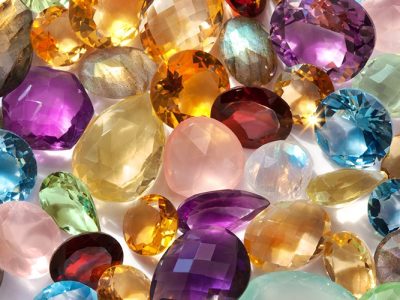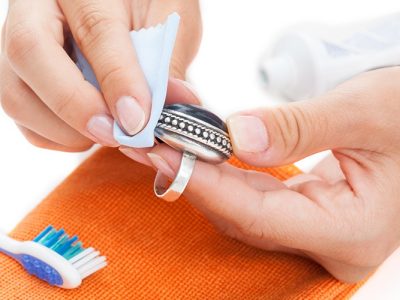Glossary of Watch Terminology
A glossary of watch terminology, from the basics through to some of the terms used in complicated mechanical watches.
Alarm
A function on a watch that makes a sound or vibration at a pre-set time.
Altimeter
Measures altitude, or height above sea level. Recording ascent and descent, an altimeter watch is an important piece of equipment for climbers, walkers, mountaineers and aviators.
AM/PM Indicator
See Day/Night indicator.
Analogue/Digital (Duo) Display aka Anadigi
A watch that displays the time, both by hour and minute hands (an analog display) and by digital digits (a digital display). This is also known as duo display or an AnaDigi watch. See Duo Display.
Analogue
A watch that uses hands and a dial to tell the time.
Annual Calendar
A complication showing the date, day and month at the minimum. Many will also display moonphase. This watch will correctly adjust for short and long months, however it will not correctly account for only 28 days of February or leap years. See Perpetual Calendar, Moonphase.
Aperture
A small opening/window found on the dials of some watches in which certain indications are given, such as the hour and the date.
Auto Repeat Countdown Timer
A countdown timer that resets itself as soon as the preset time has elapsed and starts again. The countdown is repeated continuously until the stop button is pushed.
Automatic Winding Movement
An automatic watch operates with the same principle as a mechanical manual wind watch – with the addition of a weighted pendulum called the “rotor”. The rotor is attached to the back of the movement, and when the watch is in motion (with regular wear) the rotor spins around the inside of the watch and “automatically” winds the watch, thus eliminating the need to manually wind it. It is important to understand that automatic watches also require a manual wind every so often. An automatic watch that has stopped or is at the end of its power reserve due to non-wear should be manually wound 30-40 times. Manually winding an automatic watch after the power reserve has ebbed or the watch has stopped ensures the watch is at full reserve when first worn, so as long as the watch is worn it will remain fully wound. When removed the watch will stay working for the a specified amount of time. (generally 35-45 hours).
Balance Spring
A very fine spring in a mechanical watch that causes the recoil of the balance wheel. The length and adjustment of its length regulates the timekeeping. This is also known as the Hairspring.
Balance Whee
The part of a mechanical watch movement that oscillates, dividing time into equal segments. This is the regulating mechanism that controls the watch’s timekeeping accuracy.
Barrel
A drum that holds the mainspring in a mechanical watch. The size of the barrel directly affects the length of the power reserve. Some watches feature a double-barrel, which allows for extra long power reserve. The toothed rim of the barrel drives the train
Bezel
A ring on the top side of the case around the crystal. Some (very few) are actually located beneath the crystal. The bezel’s purpose is to measure time increments. Some bezels, uni-direction turning bezels, can be turned in only one direction. Others, bi-directional turning bezels, can be turned either way, while some are fixed and cannot be turned. The purpose of a rotating bezel is to be able to begin timing an event at any given time by aligning the bezel’s #12 at the beginning point. Fixed bezel usually features a scale of sorts such as the tachymeter scale.
Bracelet
The metal strap that goes around the wearer’s wrist. A watch bracelet is typically made up of flexible, separate links that can be removed to adjust the bracelet’s length.
Bridge
A part that is fixed to the main plate to form the frame of a watch movement. All other parts are mounted inside the frame.
Calendar
A function that indicates day of the month, and sometimes day of the week and the year.
Calibre or Caliber
Since the early 18th century, the calibre of a movement has denoted the position and size of its different components, notably the wheel train and the barrel. Today the term is generally used to refer to the movement, its origins or its maker.
Case
The metal housing that contains a watch’s parts.
Chronograph
A watch with a stopwatch function. A chronograph both measures and displays elapsed times in addition to sowing conventional time. Generally the chronograph mechanism is driven by the move- ment of the watch and is operated by two buttons on the edge of the case, which start, stop and reset the chronograph. See Split Seconds Chronograph, Mono (Single) Pusher Chronograph, Fly-Back Chronograph.
Chronometer
A precision watch with a movement that has been rated by the official Swiss testing laboratory called the Controle Officiel Suisse des Chronometeres (COSC). The standard procedure involves measuring the performance of the movement at three different temperatures and in five different positions for 15 consecutive days. Mechanical movements that are accurate to -4/+6 seconds per day are awarded a chronometer certificate. Quartz movements must be accurate to +/-0.2 seconds per day, due to the fact that Quartz movements are inherently accurate and do not vary based on position and temperature. See Quartz Movement, Mechanical Movement, COSC.
Complication
A watch with functions other than timekeeping. A simple complication would include various chronographs, alarm, annual calendar and GMT functions, for example. A watch with high complications would be called a Grand Complication and could include a perpetual calendar, tourbillon, minute repeater or equation of time functions, among others. A watch with any additional function is called a complicated watch
COSC
The official chronometer testing organisation in Switzerland: Controle Officiel Suisse des Chronometres.
Countdown Timer
This allows the wearer to know how much of a pre-set time has passed. Some quartz versions sound a warning a few seconds before the pre-set time has elapsed
Crown
The grooved button on the outside of the case, used for setting the hands on a watch, and the day and date, where applicable. It is also used for winding the mainspring of a mechanical watch. The crown is also known as a winder or winding stem.
Crystal
This is the clear cover on the watch face (dial). It may be made of glass, plastic, mineral crystal or sapphire crystal (a scratch-resistant synthetic material). Its purpose is to protect the watch face.
Day/Date
A watch that shows both the day of the week and the date of the month.
Day/Night Indicator
A feature that indicates whether the indicated time is AM or PM. This feature can be found mostly (although not limited to) in watches with a GMT/Dual time display or a World Time Display to help know whether it is day or night in the other time zones.
Deployment Clasp
A buckle that attaches to either side of the strap. The buckle is expandable so that the watch can be slipped on the wrist and snapped shut. Once set to the correct size it needs not be resized, which reduces stress to the strap and elongates its life. This buckle also offers additional security while putting on and taking off the watch.
Digital Display
A watch that shows the time in numbers, or digits, rather than hands and a dial. Liquid crystal display (LCD) is commonly used.
Dual Time
A watch that shows local time and the time in at least one other time zone. This is generally displayed by an additional hour hand that tracks time in a 24 hour mode. Some watches have a separate sub-dial showing the full clock at the additional Time Zone.
Duo Display
A display that shows the time both by hour and minute hands (an analogue display) and by numbers (a digital display). This is also known as AnaDigi display.
Dial
This is the face of the watch, showing the time.
EOL
This is the End-Of-Life battery indication in quartz-powered watches. Generally the seconds begin to tick once in four seconds indicating that the power is low and it is time to change the battery.
Engine Turning/Turned
This is a centuries-old craft that, still today, involves the use of antique machines to engrave delicate patterns on metal watch components, including cases, dials, bezels and movements. It is also known as guilloché.



